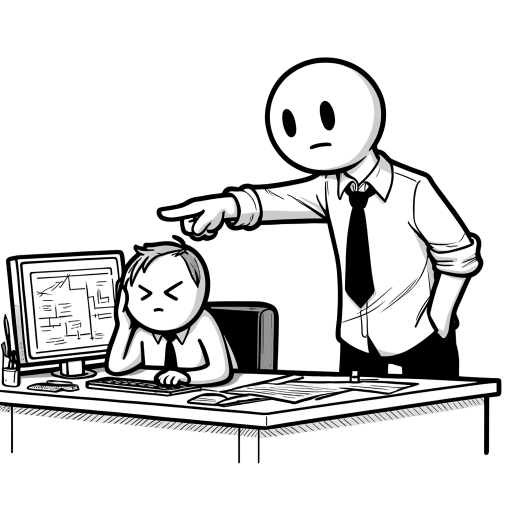I was talking to a founder about engineering velocity recently, and was excited to dig into all the tactical things, until I remembered that no matter how much you tweak processes and incentives, you can’t get peak performance unless people genuinely care and take ownership.
Now this isn’t a major revelation, but with so many leaders declaring ownership as a value and framing it on the wall, it’s surprising and a bit sad to see all the disengaged and apathetic teams out there.
So what gives?
How can we support our most impactful people to build high-quality products - efficiently, reliably, and with love?
In this post we’ll lay the foundation for high performance by:
- 🔥 understanding the fire that drives high agency people,
- ⛽ learning how trust fuels that fire, 🥶 and how bad managers pour ice water on it
- ⚙️ embracing the pillars of ownership that empower and create a positive feedback loop of:
- fulfilled people, building better products, for happier customers; creating wins, boosting confidence and increasing trust 🔄
Exec TLDR: High performance starts with a leadership team that can 1) build mutual trust and 2) create an environment where high agency people can thrive. To debug team performance, start by examining the operating system the leadership team has put in place.
🔥 What makes high ownership people tick?
We all know what ownership looks like when we see it.
- Ownership is caring about the outcome, not just the task
- Ownership is the eng manager of the growth team personally visiting a truck-stop and talking to drivers
- Ownership is finding the courage to voice the unpopular opinion
☝️ People who take ownership are satisfying deeper psychological needs. They find purpose in having clear goals, towards a mission they’re aligned with, and trusted to deliver. They thrive when they’re empowered, have autonomy, and are fairly recognized for their impact.
To harness these qualities, we need an organizational operating system built on a solid foundation - which brings us to the Pillars of Ownership.
⚙️ Pillars of Ownership
- Mutual Trust: is essential for leaders to delegate, and employees to express ideas and take risks
- Aligned Values: agreeing on an ethical framework for things to get done can improve cooperation and build trust
- Clear Rules of the Game (fair, consistent, transparent):
- Once values are aligned, consistent and transparent rules create predictability and fairness
- How decisions are made, disputes resolved, rewards shared, accountability doled out, all need to be clearly laid out.
- Alignment with the Mission: keeps everyone focused on the overarching purpose of the org and supports local decision-making
- Clear Goals: give teams autonomy, bring accountability, and enhance mutual trust by making sure everyone agrees on what constitutes a win
- Empowered Staff: empowering people to make decisions and take action on their own not only boosts engagement and satisfaction but also drives better management. When forced to delegate to their teams and take on the risk of their failure, managers have to learn to trust not only their teams, but also their own systems and guardrails to make local decisions that are globally aligned and minimize risk.
Spoiler: The most important pillar is mutual trust, and that’s where managers usually drop the ball.
🤝 Trust Fuels Ownership
- Trust fuels ownership.
- Ownership brings pride, craftsmanship, mastery, and long term thinking.
- Ownership drives resourcefulness, creativity, collaboration, and ultimately execution!
- Execution brings wins!
- Wins boost morale, branding, recruiting, runway, …
- Trust is the ultimate accelerator.
- Having a high-trust org is a tremendous competitive advantage.
🥶 How do managers undermine trust?

Unfortunately, when it comes to optimizing performance, some autocratic managers see their job solely as imposing changes and expectations on their teams, while never reflecting on their own contribution to the problems.
By holding themselves outside the scope of examination, let alone accountability, they end up creating two systems, two classes, two teams. It’s no surprise when some managers talk about ownership, they frame it as people taking ownership, rather than coming to the table motivated and somehow leaving disillusioned.
⚠️ Fostering an ownership culture starts with building mutual trust, and as a leader, you can’t build mutual trust unless you see yourself as one with your team.
🥶 How do managers undermine ownership?

Ineffective and insecure leaders find solace in micromanaging.
For a weak leader, dictating the details is a great lifeline.
It can bring a sense of security as you are seen doing things.
If projects are stuck because you haven’t built a framework that governs how decisions are made and disputes are resolved, you can parachute in, steamroll decisions, claim some immediate wins, all the while diverting attention from your own shortcomings. If your recommendations don’t work out, your proximity to the solutions can help you identify things to nitpick and shift blame.
⚠️ One way managers try to outrun these issues is by building a pipeline of new blood to replace their burned out teams - building a sputtering engine of small short term wins vs. a continuous one that builds momentum over time.
⚠️ Since short term wins can hide incompetence, execs and boards need to be extra vigilant and consider not only the numbers but at what long term cost they’re being obtained.
🌱Overall, to drive performance, before debugging org processes, workflows, carrots and sticks, it’s important to make sure that the management team has built a solid org operating system that empowers people and pushes decision making down as much as possible.
(With the ownership foundation laid out, in a future post, we will cover implementation details of such an org operating system to drive high performance. Stay tuned and sign up for updates.)
